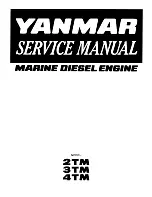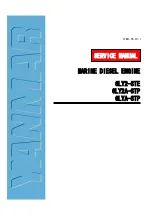
00-7
Sealant (FIPG)
Sealant is used on many parts of the engine and gearbox. The using of sealant is for the purpose of adequately sealing,
therefore, much attention should be paid to the dosage, position and the surface of sealant. Insufficient dosage of sealant
may result in leakage, while superfluous dosage of sealant may result in the overflow of sealant and jam the passage of
water or oil, or narrow the passage. So, in order to avoid leaking on the mounting surface, it is absolutely necessary to
keep the correct dosage that may keep from disconnection.
FIPG used in the engine is of Room Temperature Vulcanizing (RTV) and is provided in the way of 100-gram tube (Piece
No. MD970389, for engine use). RTV may vulcanize after reaction with the water content in the air; therefore, it is usually
used on the metal end face.
Disassembly
Components assembled with sealant may be disassembled without using a special method. However, in some cases, it
is necessary to lightly hit the components with a mallet or similar tools so as to break sealant on the coupling face, or
use a smooth thin sealant knife to hit into the joint face gently without damaging the coupling face. When dismounting
the engine oil pan, use special tool for dismounting oil pan (MD998727).
Cleaning of Sealing Surfaces
Remove rubbish on the sealing surface with a sealant knife or a steel wire brush. Be sure the sealing surface is flat and
smooth, and there isn
t any oil stain of foreign object on it. Remember to remove the sealant inside the mounting hole
and the threaded holes.
Essentials for Smearing
Matters to be taken into consideration while assembling components with FIPG.
Smear sealant equally within the prescribed diameter to cover around the mounting hole. Sealant that is not yet vulcanized
can be removed. After the installation, the sealant should be sufficiently vulcanized (approximately 1 hour or so). Do
not apply oil on the smeared part or wet or startup the engine during this period.
OVERVIEW
SEALANT(FIGP)








































